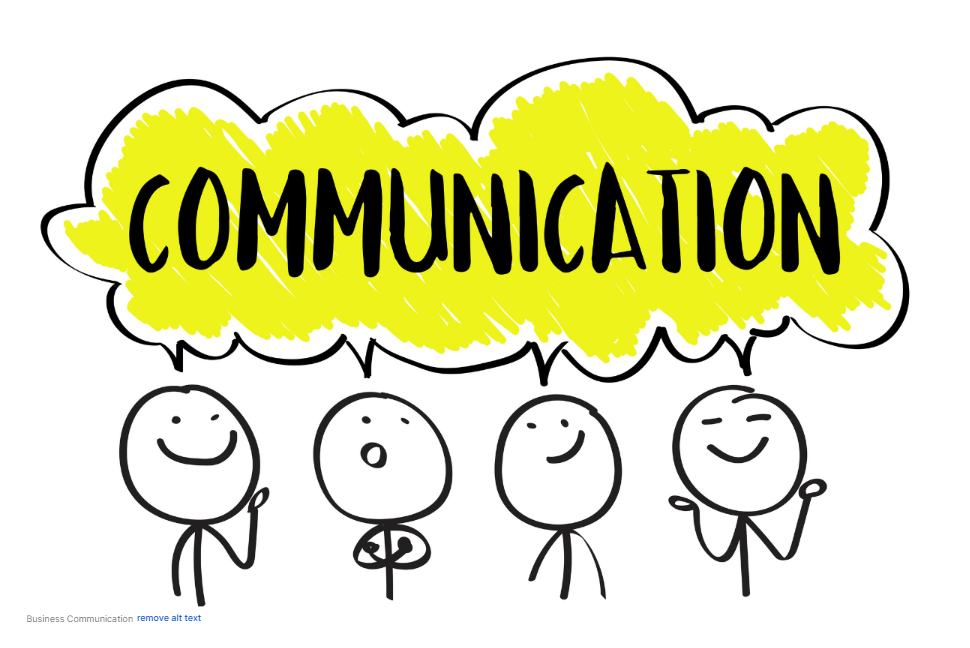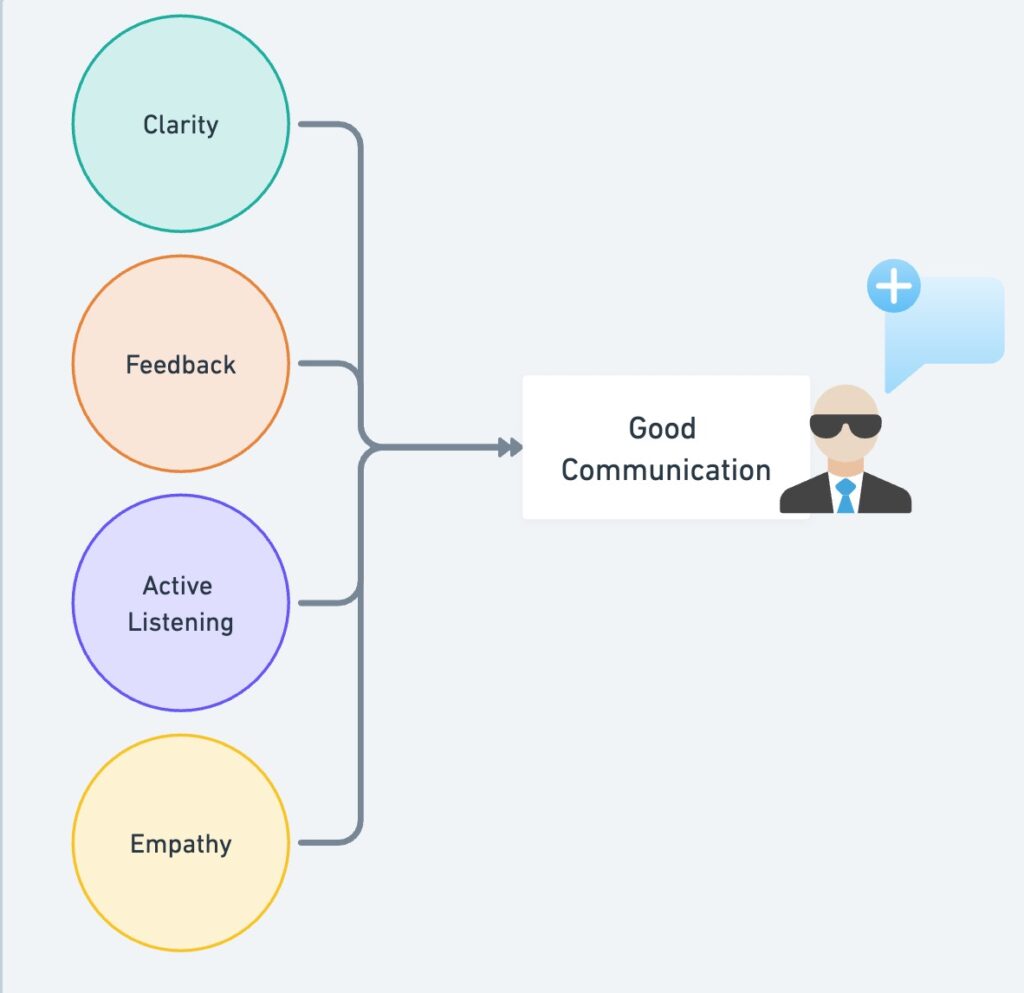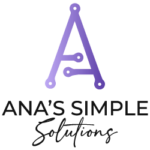Essentials of Business Communication
What if I told you that the secret to a successful business isn’t just a great product or service, but how you approach business communication?
I have often stated that even if everyone is speaking the same language, no one really understands the same language.
Ever heard of the phrase, “It’s not what you say, but how you say it”? That holds true in business communication as well.
Effective business communication can build strong relationships with clients, improve team collaboration, and ultimately lead to higher profits. So, pay attention to how you communicate – be clear, concise, and empathetic. It can make all the difference in your business’s success. wondered why some businesses thrive while others struggle. The answer often lies in communication. Whether it be in messaging to potential clients, members of your own team, or the clients themselves, how, when, and where something is communicated is much more than a sentence.
I have spent years in different types of businesses, large and small, and the one thing they all struggled with was communication. It is a large part of why I am such a fan of project management tools and spreadsheets and the “facts” they can provide so efficiently. But the fact is that communication is much more than words written on a page.
Communication is so vital to pay attention to in your business because it drives collaboration, productivity, and overall success, not only for you but for your clients as well.
Today I am exploring the role of effective communication in business.
Key aspects such as clarity, active listening, empathy, and feedback are discussed as crucial components. Improved communication can enhance productivity, strengthen workplace relationships, and drive business success. By mastering these skills, we can transform chaos into clarity, making the business journey smoother, especially for neuro-spicy business owners.
I just had an instance yesterday with a client, where I was locked out of her bank account. I needed access to it because I am in charge of running payroll. In order to reset the password I had to use her debit-card number as proof that I was allowed access to the account.
I entered the card number multiple times, along with her password, birthdate, and a multitude of other numbers.
In frustration, I let her know about the problem (instead of just trying to keep it to myself) and asked if anything had changed that I should know about.
Lo and behold, she told me she received a new debit card a few days before.
Had I NOT reached out to her, had I not explained the issue regarding the types of info I was using to get her into the account there is no way that she could have known that the new debit card was needed to regain access.
Think of the hours I could have spent talking to representatives of the bank before they clued me into that.
This is SUCH a big subject, that I have decided to dedicate the next 3 blogs to talking about communication within our businesses, from understanding the styles of communication to getting your team all on the same page and finally how to use these newly found skills to serve your clients effectively.
There is so much to be said about this, and of course, I will be making videos of how to improve your communications with my favorite tools, ClickUp and Airtable… and maybe a few others along the way.
What is Business communication? Why Does It Matter?
Ever feel like you’re juggling a million tasks at once, trying to keep your business running smoothly while also attempting to maintain clarity in your business communications? You’re not alone. As a neuro-spicy business owner myself, the complexities of workplace communication can sometimes (nay… all the time) seem overwhelming.
So, let’s dive into the heart of what business communication actually is, and more importantly, why it matters so much in your business, (and also your life).

At its core, communication is the process of sharing information between people within and outside a company. It is how we express our ideas, convey decisions, give feedback, negotiate deals, and collaborate with our team and clients. It’s the emails you send, the meetings you hold, the presentations you deliver, the emails you send, and even the non-verbal cues you give out… yes, even on Zoom for you fully-remote peeps.
Now, you might be thinking, “Sure, I communicate every day. But how can I make it more effective?” First of all. Kudos for even THINKING about how your communication may be missing the mark on the effectiveness scale. So many business owners don’t evaluate the delivery of messaging, but rather on the receiving end.
Effective communication is made up of a few key pieces:

Clarity in your message:
Your message needs to be clear and concise to avoid misunderstandings. Remember, in communication, especially business communication, simplicity is your best friend.
You don’t need to tell your colleague the story about how your dog escaped from your yard and then your kids were late to school which meant you had to call the school and that is why you are 5 minutes late to the meeting. You can just state that you had a home emergency and that you apologize for being late.
Clarity in messaging may mean communicating pleasantly or directly, with only essential information.
Active Listening is half the solution:
Communication is a two-way street. Listening to understand, rather than respond, is super important to good communication.
Active listening isn’t just about hearing the words that are said; it’s about understanding the message behind them. It means also asking follow-up questions, showing empathy, and confirming our understanding of the person giving the message.
Much like a kid playing with putty, we need to experiment with the information being given to us to make sure we are understanding it and can really figure out what it can do.
I have been known to rephrase what a client says many times just to ensure I understand their process or the context of a specific workflow.
Another example would be to ask how someone came to a specific conclusion, or if there were any other details that could be added.
What other types of active listening techniques can you think of that would be beneficial for your business communication?
Empathy is understanding the situation from their angle:
Understanding and acknowledging others’ perspectives helps build stronger connections.
In my experience, there is nothing stronger to keep a team member loyal to your company and vision than one you strive to understand and see their view on the situation.
Empathy is one of those words that can feel a little “fluffy” and unnecessary, but the fact is that we are all human with different experiences that create a different lens that we see the world through. Taking a step back to attempt to put on that lens will not only increase your understanding of a teammate’s messages but also allow them to be freer in their want to contribute and communicate with you.

Constructive Feedback
Constructive feedback helps your team grow, and welcoming feedback on your own work demonstrates your commitment to improvement.
Communication is not about talking at someone, it’s about engaging with them and feedback is what allows this engagement to happen. It’s what turns monologues into dialogues, information into understanding, and plans into action.
Think about it. When you share an idea with your team, do you want them to nod along passively, or do you want them to respond with their thoughts and suggestions? I’m betting it’s the latter. That’s feedback in action. It shows that your message has been received and considered.
Feedback can also act as a mirror, reflecting how our messages are perceived. Let’s say you’ve just delivered a presentation, and afterward, a colleague says, “I liked your points, but some of the slides were a bit confusing.” That’s feedback. It helps you see your work from a different perspective, and it provides you with valuable insights for improvement.
Feedback may not always be comfortable, but it can be valuable. It’s a two-way street that requires giving and receiving. It helps us correct course, affirm strengths, and continuously improve. It makes us better communicators, better leaders, and better team players.

Mastering the Art of Communication
Now, why does all of this matter, particularly for communication for ADHD business owners? Well, mastering the art of effective communication can create profound changes in your business. It can boost productivity by ensuring everyone understands their tasks and goals. It can improve workplace relationships by fostering understanding and mutual respect. And ultimately, it can lead to greater business success by streamlining operations and enhancing customer interactions.
Think of good business communication as the glue that holds all the parts of your business together. When it’s missing or ineffective, things can start to feel a bit… chaotic. But with clear, empathetic, and effective communication, you’ll see a transformation. The chaos subsides. Things start clicking into place. And the day-to-day running of your business becomes that much smoother.
So, fellow ADHD-business owners, let’s embark on this journey of mastering internal and external business communication together. Let’s delve into the specifics of communication for ADHD business owners, simplify, streamline, and say goodbye to chaos!”
👉👉 Check out my YouTube on Communicating using ClickUp 👈👈
People Also Ask —
Q: What are some practical strategies for improving business communication?
A: To enhance business communication starts with clarity and simplicity in your messaging. Encourage active listening within your team, promoting a culture where everyone seeks to understand before responding. Cultivate empathy by appreciating diverse perspectives. Provide and invite constructive feedback to facilitate continuous improvement. Lastly, consider utilizing tools like ClickUp to streamline communication.
Q: What are some common barriers to effective communication and how can I overcome them?
A: Common barriers can include language differences, cultural nuances, physical noise, technical jargon, and emotional blocks. To overcome these, aim for clarity and simplicity in your messaging. Use common, easily understood language and present ideas in a structured way. Practice empathy to understand cultural variations, minimize distractions when communicating, avoid unnecessary jargon, and foster an environment of openness and trust to navigate emotional hurdles.
Q: How can ClickUp help improve communication in my business?
A: ClickUp is a versatile tool that offers numerous features to enhance communication. With its integrated chat feature, you can instantly discuss ideas, progress, and issues with your team. ClickUp’s task feature ensures everyone is aligned on their responsibilities, facilitating transparent communication about project progress. The platform’s recording feature allows for efficient, time-stamped communication, where verbal and visual cues can be shared for more nuanced understanding. All these features together make ClickUp a one-stop communication solution for businesses.
Q: How can I adapt different communication styles for various situations in my business?
A: Adapting communication styles involves understanding the context and the recipient. For instance, when dealing with conflict, an assertive style is often beneficial. When presenting a new idea, a more persuasive and engaging style may be suitable. In team collaboration, open and inclusive communication helps everyone feel valued. Recognizing the communication styles of your colleagues and adapting your approach to match their preferences can also improve mutual understanding and productivity.
Looking to learn more?
Check out these blogs:
Business Documents that every Entreprenuer should have


